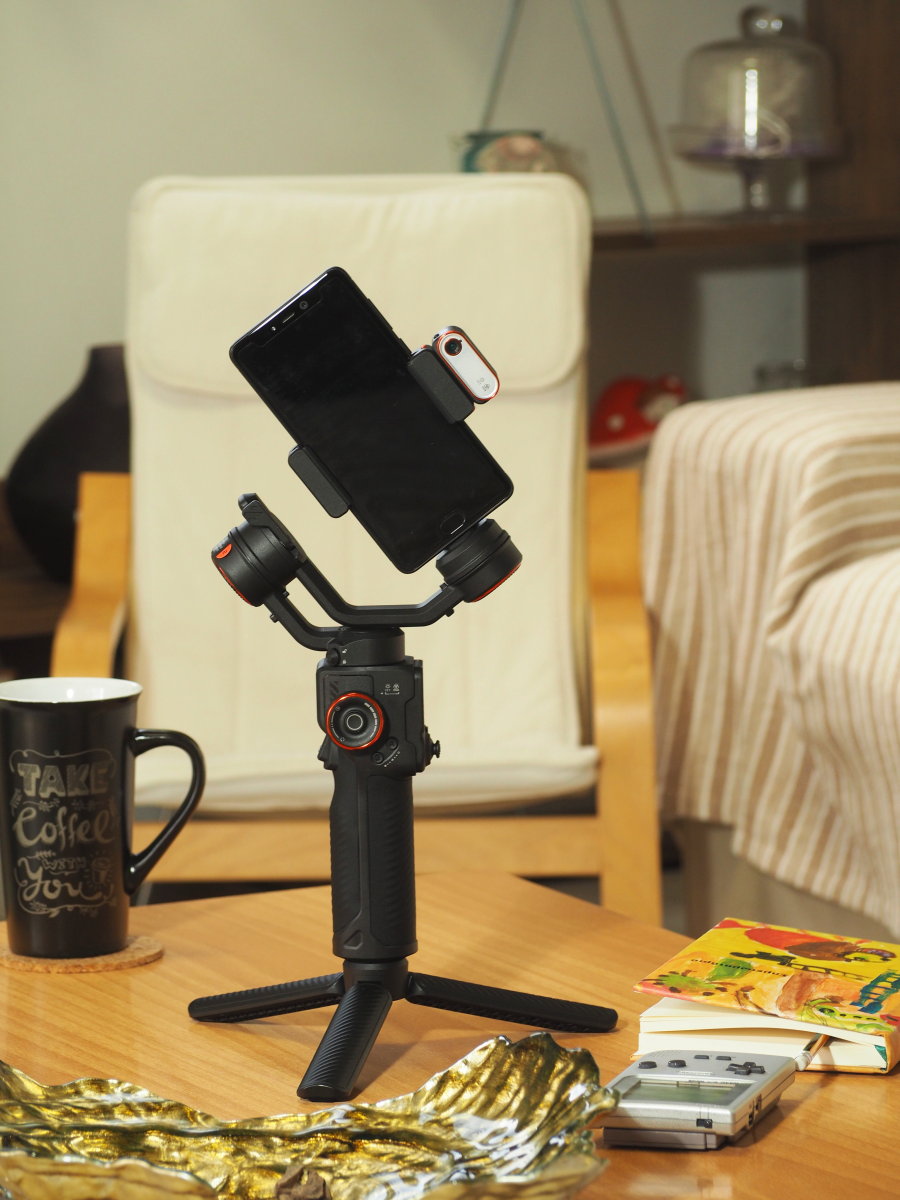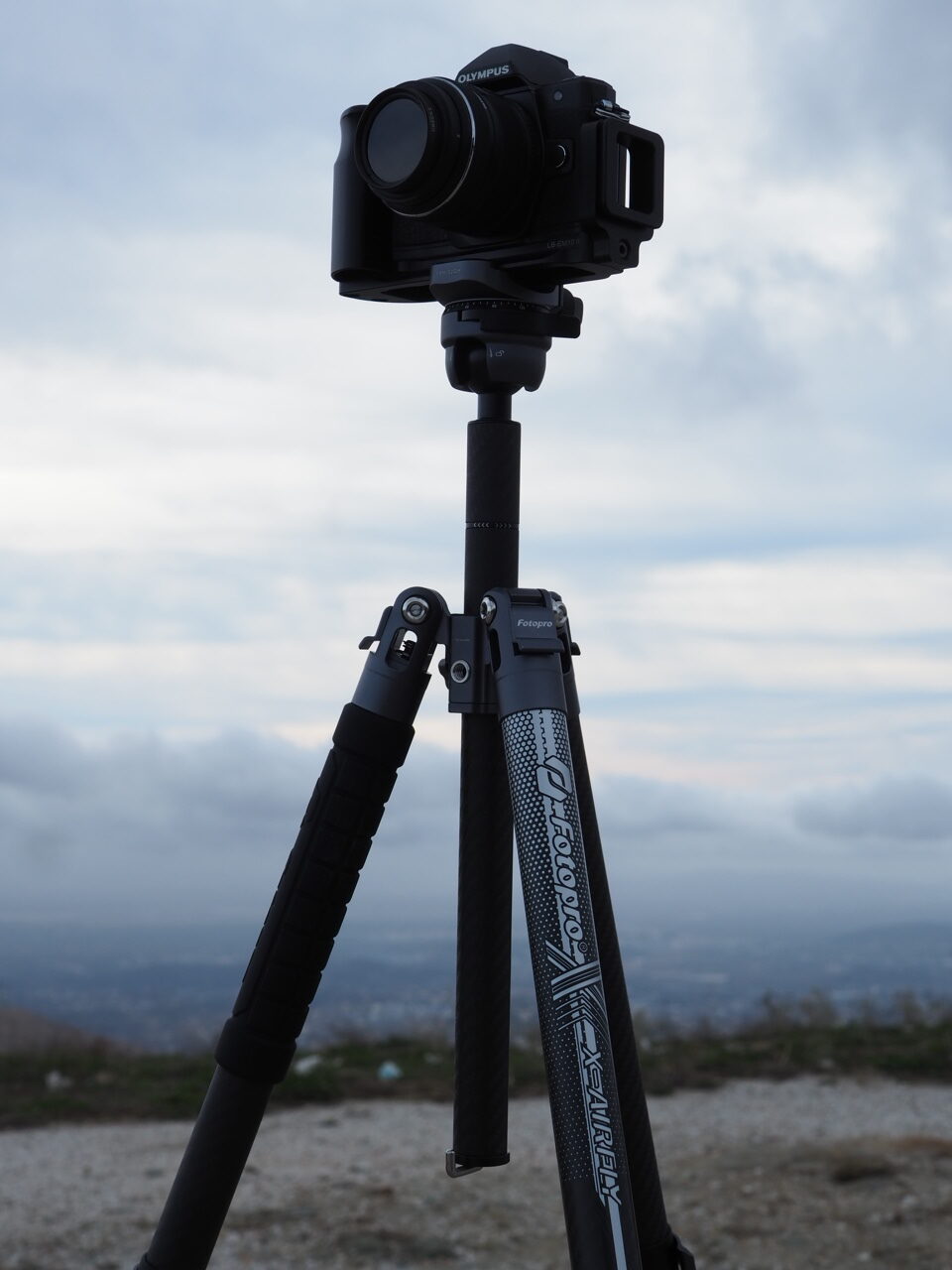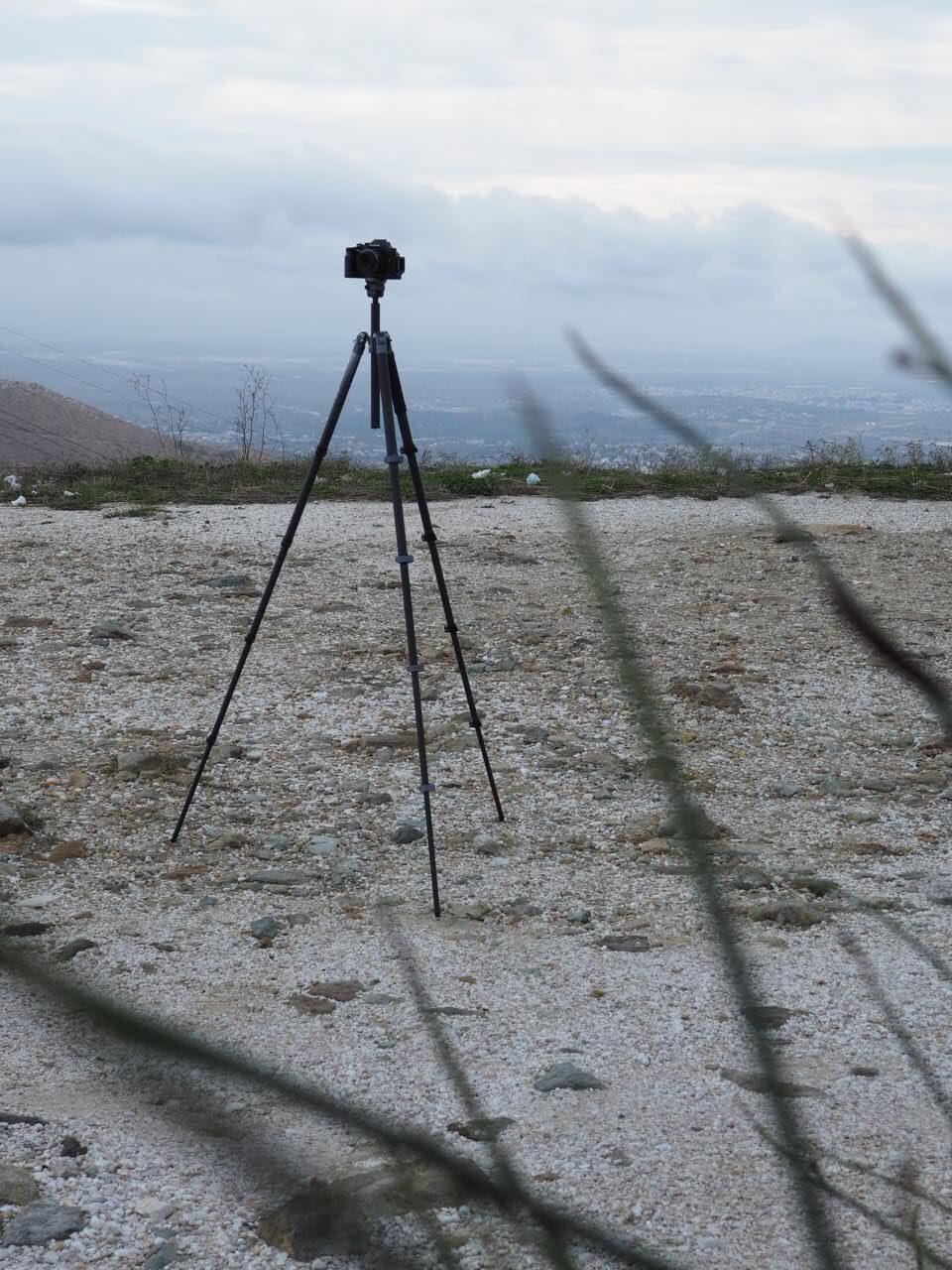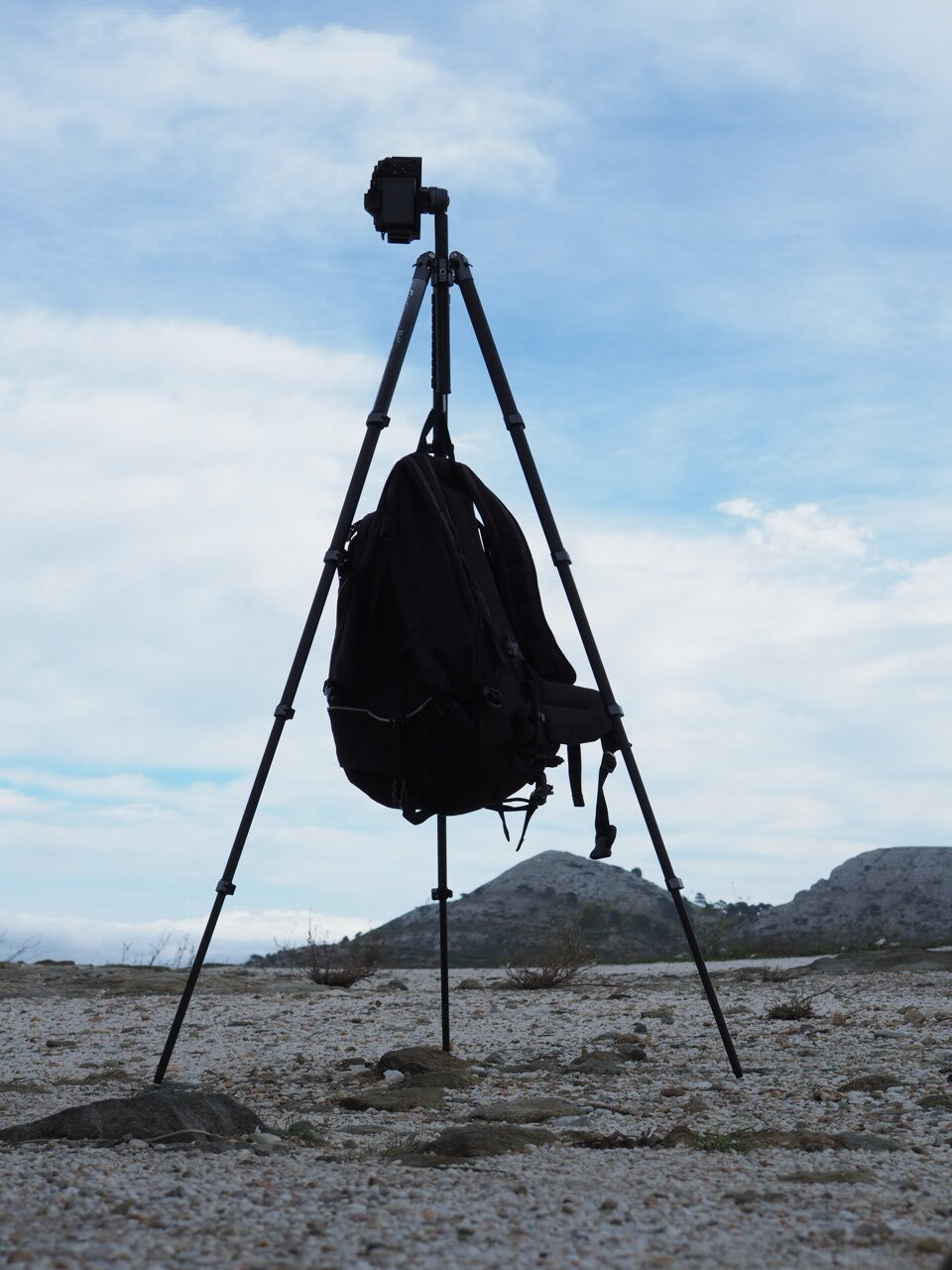
Fotopro X-Airfly carbon fiber tripod initial review
Review by Dimou Dimitris

Disclosure
This X-Airfly carbon fiber tripod was kindly sent to me by Fotopro in order to review and share my experience and thoughts using it. The company does not claim to review this article prior to its’ release and everything that follows is a totally honest review. So let’s get into it.

The tripod with its accessories and the carrying bag.
Unboxing & first thoughts
The package delivered, was about the size of the X-Aircross 3 Carbon I received almost a year ago. It was safely protected by several layers of bubble wrap and felt lightweight. The box was familiar with the distinct Fotopro blue color and fonts. The X-Airfly Carbon was placed in a convenient carrying case with a couple of zipped pockets. In it there was also the product documentation and a couple of Allen wrenches. The tripod also continues the adoption of the widely accepted Arca-Swiss plates that are the industry standard. All moving parts function smoothly and I am mostly excited to try out the new flip lock system and see how it compares to the twist lock.
Features and specs
In order to be able to provide as much information on the separate features of the tripod, I will briefly mention some of the specs and after that, I will provide more detail on each one of them. So, starting with the usual specs of tripods, that interest us users, the new X-Airfly Carbon is a 5 section tripod, with a max leg section diameter of 25mm. When folded, its length is 437mm, its diameter of only 71mm, and can reach up to 1330mm/1600mm with the center column retracted and extended respectively. As usual, it is buffer designed and has an integrated hook for adding weight and a hidden phone holder. The center column is made of 2 sections and thanks to that feature in allows for low angle shooting, as low as 105mm. The total weight is kept at only 1.143g, thanks to the 3K carbon fiber material used, but is able to support up to 5kg of camera gear. The 30mm reverse ballhead design, is unique in so many ways, that I will get into it later. This tripod instead of the usual or innovating twist locks systems, that Fotopro mostly uses, this time it utilizes flip locks. Although I have mentioned in previous articles, that I am not fan of them, I am going to later analyze, how Fotopro managed to cleverly improve the bug of this system, that was the cause of my dislike. Other than that, the beloved spikes feet, with the removable foot pads are also incorporated in the X-Airfly, as well as 2 threaded expansion holes for adding extra gear.

The upgraded spring loaded flip lock design. The gap when unlocked is produced by the spring action.
FLIP LOCKS
The flip lock design of the Fotopro X-Airfly works flawlessly. First of all the latches are made of aluminum which makes them way tougher than plastic and also the wing shape design, prevents from pinching your fingers, which is something common, especially among users with smaller hands. The locks are easily operated, even with one hand, and the compact design, allows the user to unlock all of them simultaneously for rapid deployment of the tripod. The lever action is smooth and you can feel that it applies just the right amount of force in order to join the leg sections. Neither excessive, nor less than needed. Lastly once unlocked, the latches stay open thanks to the spring loaded design and they are not moving all over the place.

Thanks to screws placement on the flip locks, you are able to adjust the tension if needed, after extensive usage.
As I mentioned above, I was never a big fan of the flip lock design. My first few tripods were using this system, but over time they became loose, without the ability to repair them. As the locks were fastened in each leg section with rivet, once they became loose, it was all over. One simple rivet failure and the tripod was pretty much useless. Now Fotopro, went above and beyond, and improved the flip lock, by utilizing Allen screws, rather than rivets. That way, if a single flip lock becomes a bit loose over time, it can be adjusted with the included Allen wrench. What is mind blowing, is the fact, that this can be carried out even in the field and from the user himself, without the need of a certified technician, something that could cost extra time and money. Simultaneously, when adjusting the Allen screw, you also adjust the spring load for keeping the latch still and not fiddling around when it is open.
That way, Fotopro made me love the flip lock design again, that has been a constant complaint among tripod users. Either being photographers or videographers, this was a common complaint I frequently heard, as most of us, at some point we have been disappointed by low quality products and poor craftsmanship.

The reverse ballhead design ensures the same functionality, with reduced weight.
REVERSE BALLHEAD
The unique reverse ballhead design has some very clever engineering behind it. Minimizing the traditional ball housing, now the overall weight is less than a counterpart classic ballhead. Also being upside down, dirt and particles are highly unlikely to fall on the ball itself and cause friction and rough operation. Its operation has become even easier, thanks to the flip lock design of the head. In this tripod Fotopro went all in on ergonomics. On previous Fotopro tripods, I had experienced screw knobs for loosening and tightening the ballhead, and sometimes I was realizing that I might had been using excessive tightening force. With the flip lock design this is not an issue, as the latch is adjusted perfectly. The 30mm ball moves and grips great, and it is able to support much much heavier loads than my Micro Four Thirds cameras. On top of the ballhead there is the useful and familiar bubble level and for anyone wondering, the ballhead can be removed, with the use of one included Allen wrench.

As always there are degrees markings for panorama shots.
The Arca-Swiss plate release knob and the panorama release knob, are cleverly designed and work in a coaxial fashion. That way there are not multiple knobs extruded, that might get caught somewhere and potentially damage a piece of your gear. Also the plate release, that is located externally, needs a lot of turns in order to insert or remove the plate, meaning that a partially loose knob, won’t necessarily result in a fallen camera. Many users might find this annoying, but as I personally favor safety over convenience, I am all in for the extra few turns. The panorama release knob, is located in the center of the coaxial style knob design. It easily locks and loosens the panorama function which is dampened, which results in incredibly smooth pans. Lastly I must point out that if the center column is all the way down, the ballhead is not able to be rotated vertically, until the center column is lifted by almost a cm. The length of the upper part of the center column, is adequate in order to perform this process, even if the lower part is removed.

Foot spikes provide excellent grip on every terrain.
FOOT SPIKES
Although not having spikes on the feet, is not a deal breaker for me personally, having them is an extra feature that I really like. There are some terrains, that can really benefit from them. Dirt and gravel being the most common, there are times that the leg will sit on a couple of little stones, that may shift over time. I always make sure to press the tripod against the ground, so most of them will go away, but this is not always the case. The spikes are able to moderately penetrate the ground, thus they are not affected by such particles. Indoor use of the tripod, benefits from the use of the elastic foot pads though, which by the way are easily installed and removed. They stick on the floor, regardless of the material and also protect it at the same time, which is especially important in case of softer materials, like wood.

The center column release knob has been upgraded, in order to be permanently attached to the tripod.
CENTER COLUMN
The center column is made of 2 pieces, that are firmly screwed together. On the top there is the ballhead and on the bottom the hidden phone holder with the spring loaded hook, for adding weight in case you need to. The column release knob, has been redesigned and you cannot fully unscrew it, which I think is nice, so you don’t loose any significant parts. After almost a full turn, it stops and the center column is free to move. However, the column buffer design has also been improved, as the column, even with the knob loose, won’t move, until the user deliberately applies a bit of force. So, even you forget to tighten the center column knob, your gear is still protected.
As I was used to with Fotopros’ tripods, I have the ability to unscrew the lower column section, in order to achieve low angle shots, up to 104mm above the ground. Lastly by removing the hook attached at the bottom, you can invert the center column. This might seem a bit gimmicky to some, but actually has a lot of uses like shooting macro, nature, products, reproductions etc.

The expansion holes have become a standard on all latest Fotopro tripods.
EXPANSION HOLES
There are a couple ¼ threaded expansion holes on the tripod. They are great for adding accessories, thus removing excessive weight from the ballhead. Although the weight capacity of the ballhead is way above the average camera and combo, reducing its strain, is always a good thing. With the help of a magic arm, it might be an audio recorder, mobile phone, action camera, LED light, you name it. So the overall goal, which is perfectly achieved, is to expand your mounting abilities, without the need to bring along another tripod, saving yourself from carrying extra weight.

The new X-Airfly provides a stable platform for landscape shooting.
My background
Having used my other Fotopro tripods, the Sherpa Max and the X-Aircross 3 extensively, I could confidently say, I have a pretty good idea of the tripod categories above and below the X-Airfly. That will inevitably lead me to a harsher critique, as I already have not only one, but two measures of comparison. I have also been spoiled from their high quality products, so I was expecting nothing less than that. Between the previous mentioned tripods though, there is a significant gap, and as I was informed from Fotopro, the new X-Airfly Carbon sits somewhere in the middle. The Sherpa Max, is a superb landscape tripod, that manages to be light, yet extremely stable. The X-Aircross 3 on the other hand is focused on portability in less than a kilo package. So I was eager to find out for myself the place of this newly released tripod.

Creative ways to get sharp shots on high wind situations.
In use
The review process is similar to what I always do. Use the tripod in realistic conditions, over and over again, until liabilities shows up. Repeatability is the key for a trustworthy review. So the 2 main test categories I conducted were, hiking/camping and travel/urban use. When heading outdoors I almost always carry a tripod with me. When I have planned a specific shot or more, I will definitely carry one, but for all those other times that it is nice to have in case you need it, the X-Airfly was very pleasing to carry. Being a 5 section tripod, it packs small, and is easily attached to a 30lt daypack, without being overwhelming. In case you carry a bigger pack, anything larger than 45lt, it will almost go unnoticeable. Its 1140g weight is something that won’t be much of a burden even when walking for several hours. When I used it for my landscape shooting, it proved to be stable, except at times where the wind really picked up. In those cases I used less of my longer lenses, in order to get sharper shots. Adding weight to the integrated hook helped significantly, but gusts of wind, are always a problem. I got especially pleased with its height, as it allowed me to work comfortably and without the need to be positioned in any weird way while shooting. Some shots would also be impossible to get, in case I hadn’t had a tripod with me in the first place. And I am not talking about challenging conditions only as mentioned above. Long exposures or even when sunlight starts to fade, would fall into this category, so I am pleased to have the ability to get those also, thanks to this lightweight tripod.

For most day hikes, I would rarely need a heavier tripod than the X-Airfly.
In case of traveling with the X-Airfly, it was great to have it with me at all times, while strolling around in a new place. Most of the times, this was an urban or suburban environment. In those cases I am divided between using backpacks and shoulder bags. A shoulder bag seems a bit more casual than a backpack, and if I want to blend in more and look more than the tourist that I am, I mostly go with the former option. So even if the weight of a camera body, 2-3 lenses and a tripod, rests on one shoulder, it is not bad at all. Especially if you are anything like me, that wanders around the city all day long, like time is running out I have to see most of the sights in less time. Taking into consideration though, that in those cases you will constantly make breaks for photography, snack or just for a short rest, the conditions are different. So I got even less tired of the weight, even though I possibly ended up carrying it more, than in the outdoor scenario.

Even when paired with smaller backpacks, it fits perfectly.
Throughout those tests, I felt like having a multitool with me. I did use it for capturing demanding shots, from landscapes, sunrises, sunsets and timelapses, all the way to tripod mounted selfies with a smartphone. I even shot some fountains, at lower shutter speeds, in order to smooth out the water. The most important aspect of this, is that I had it with me. If it was either super heavy but stable, or so light that becomes inadequate, be sure I would have passed. The goal is to have a tripod that suits your needs, and will serve your purpose, that way you will find value taking it with you, as I myself find value in the Fotopro X-Airfly.
Versions
In order for the reader to be fully informed of the available versions of the new X-Airfly carbon fiber tripod, I will mention these here. There is the X-Airfly photo version with the ballhead, and the X-Airfly video version with the new inverted MH-4H video head. The tripod also comes to larger X-Airfly Max version which is a 4 section tripod, with bigger load capacity, height, legs diameter etc. As you can tell the Max version is oriented towards heavier gear and providing a more stable platform for it. It also comes in a photo and video version, in order to get every user covered. For more information you can click the following link X-Airfly Series – Fotoprogear and have a look at the entire product family and choose for yourself, which one is right for you.
Who is this for
If you are looking for a standard size tripod that can handle even heavier loads, than your smartphone or action camera the X-Airfly got you covered. Especially if you are considering it for traveling, it comes in a small package that you won’t hesitate to take it with you daily. It will even perform well up to landscape shots, timelapses and video, without very challenging conditions. For its price tag you get way more than generic tripods, that basically offer all the same basic features and quality. So whether you want a new, lighter or heavier tripod than the one you might already have, you should definitely go with the X-Airfly.
Conclusion
I really enjoyed using the new X-Airfly carbon fiber tripod as it performed great and I have no complaints from its use. It really bridges the gap between small, lightweight travel tripods that sometimes feel flimsy and bigger, more stable landscape tripods, that feel like an overkill to carry around extensively. So I am confident I can use it for my landscape photography with great success and wear less myself down in case of a long hike, but also it is compact and lightweight, to serve as the travel tripod on my next multi day adventure. In short, it combines the best of both world, in terms of portability and sturdiness.
Its many feature will cover every shooting style and needs you might have and the well known, high quality craftsmanship of Fotopro will ensure the its longevity. Every new tripod Fotopro releases, keeps getting better than previous model, something I thought it wasn’t possible. But it is that company ethic, that constantly pushes manufacturing quality getting better and better, that got me hooked to exclusively use Fotopro tripods. When you use either the X-Airfly or any other tripod from Fotopro, you will understand what I am talking about.
You can find out more about the X-Airfly series and purchase one of them via the official Fotopro web store, fotoprogear.com and also navigate throughout the store for more tripods and accessories.


